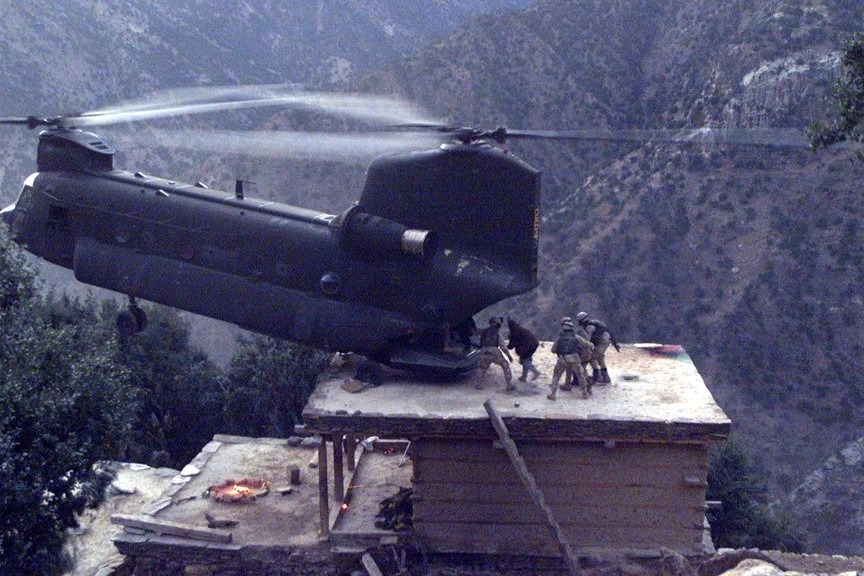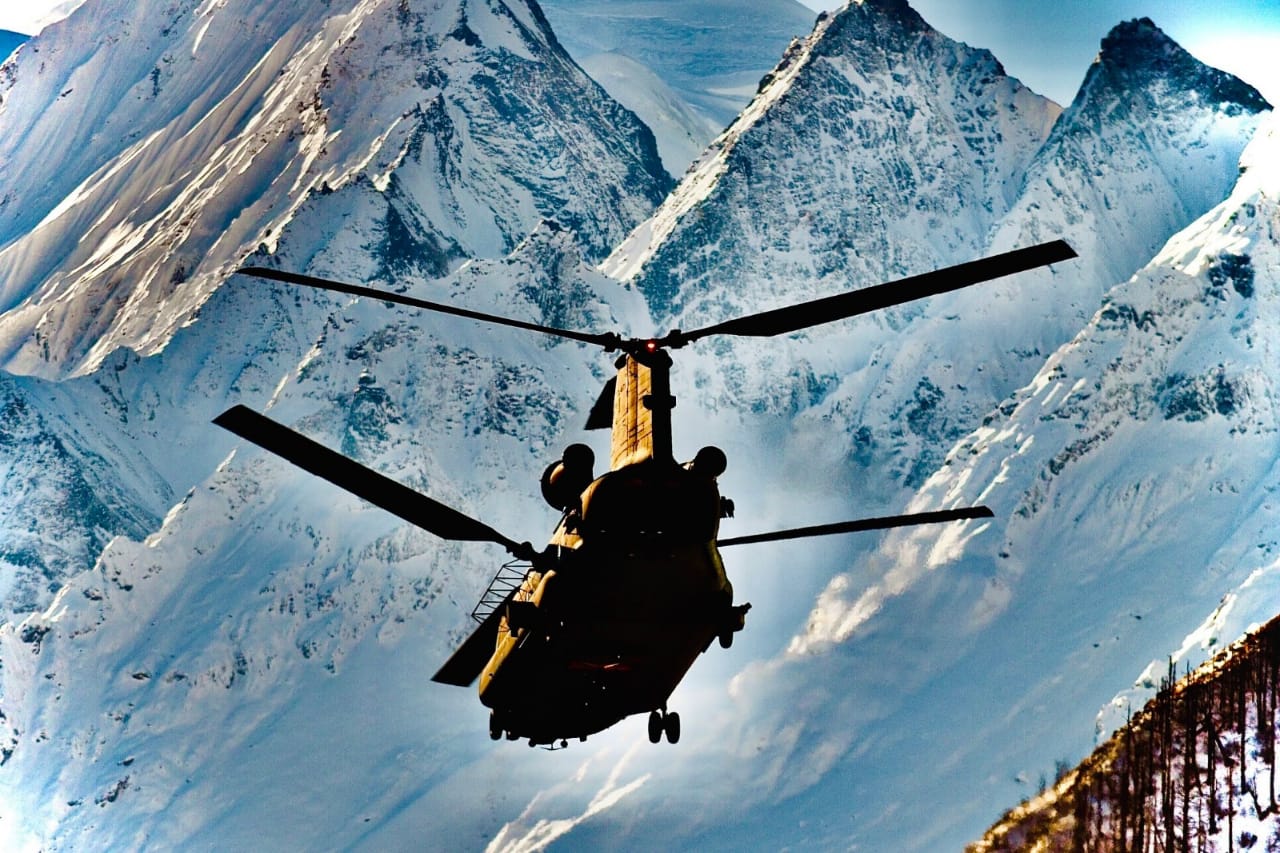Piloting helicopters in a combat zone is one of the most challenging tasks, demanding exceptional skill and precision. An iconic photograph captured nearly two decades ago vividly illustrates this difficulty.
The resurfaced photo has been shared by the US military, accompanied by detailed insights from helicopter pilots who recollect the iconic moment from 20 years ago.
The press release elaborated that on November 10, 2003, Chief Warrant Officer 3 Larry Murphy and Chief Warrant Officer 3 Paul Barnes, both piloting a CH-47 Chinook helicopter in northeastern Afghanistan, received a call to aid US soldiers on the ground.
The two pilots rushed to a village situated on a steep mountain where detainees held by the Army’s 10th Mountain Division needed transport to Bagram Airfield.
Faced with limited landing options, Murphy executed a landing with the helicopter’s two rear wheels on the roof of a small house while keeping the front wheels hovering to facilitate loading the detainees into the back of the aircraft.
Sgt. Greg Heath, an Army journalist from Delaware County, Pennsylvania, captured a photo of the helicopter’s remarkable perch atop the house, an image that has since become one of the “most iconic” images from the 20-year conflict in Afghanistan.

Despite the photo of the landing gaining widespread attention, Murphy said that, in reality, the maneuver wasn’t as challenging as it may appear.
“It was just another day on the job,” he said. “We didn’t think anything about it at the time. It was a little bit of a job getting it on there, but nothing we hadn’t done before.”
Murphy, the pilot-in-command, added that it was a routine operation for a Chinook, known as a pinnacle landing. Furthermore, the crew, including Sgt. 1st Class Jim Duggan, Sgt. Brian Kilburn, and Spc. Margaret Haydock played a crucial role in guiding the aircraft onto the roof.
Murphy highlighted the significance of verbal communication in such close-to-ground operations, where crew members effectively directed the landing. He attributed his ease in executing the landing to his experience as a pilot, particularly as a full-time EMS pilot outside the Guard.
The iconic photograph captured during this mission became widely recognized over the years, appearing in news articles, internet memes, and even inspiring a painting by combat artist Larry Selman.
While the pilots, Murphy and Barnes, downplayed the mission’s complexity, the iconic image has become a lasting memory, periodically resurfacing and providing them with a sense of recognition and pride in their service.
The Backbone US Military
In Afghanistan, the CH-47 Chinook has stood as the stalwart workhorse for the U.S. military, maintaining its status as the most proficient heavy-lift helicopter globally, capable of reaching speeds of nearly 200 miles per hour.
This exceptional utility has not gone unnoticed, as the Chinook is utilized by both the United States and its allied nations. Despite its age, ongoing upgrades and technological advancements have solidified the Chinook’s standing as a world-class heavy-lift helicopter.
Its versatility and capability, demonstrated through transporting fully equipped infantry, special operators, and up to 10 tons of supplies, make it a preferred choice for various nations.
Those entrusted with the most perilous missions, such as special operators, consistently express their unwavering faith in the Chinook due to its proven reliability, speed, and substantial cargo and troop-carrying capacity.
The helicopter, measuring 52 feet in length and standing at 18 feet in height, has a takeoff capacity of 50,000 pounds and is capable of flying with a loaded weight of 26,000 pounds. Additionally, it has the capability to mount a minimum of three machine guns—one on each window and another at the rear cargo opening.

The Chinook’s legacy extends beyond Afghanistan, having proven its mettle in conflicts like Vietnam and the Gulf War. Its adaptability was evident when the U.S. Army converted some into heavily armed “ACH-47” gunships during the Vietnam War.
The renowned 160th Special Operations Aviation Regiment, also known as the “Night Stalkers,” has continually adapted and modified Chinooks over the decades.
The MH-47D, E, and G “Special Operations Aircraft” boast in-flight refueling capabilities, enhanced defensive weaponry, expanded fuel capacity, specialized navigation and avionics systems, and other additions tailored for the Night Stalkers’ specialized nighttime operations.
The Chinook, the F model, entered production in 2006, marking Boeing’s commitment to advancing this iconic helicopter. While certain F models incorporate reused engines, rotors, and transmissions from D models, most of these helicopters are entirely newly constructed.
- Contact the author at ashishmichel(at)gmail.com
- Follow EurAsian Times on Google News




